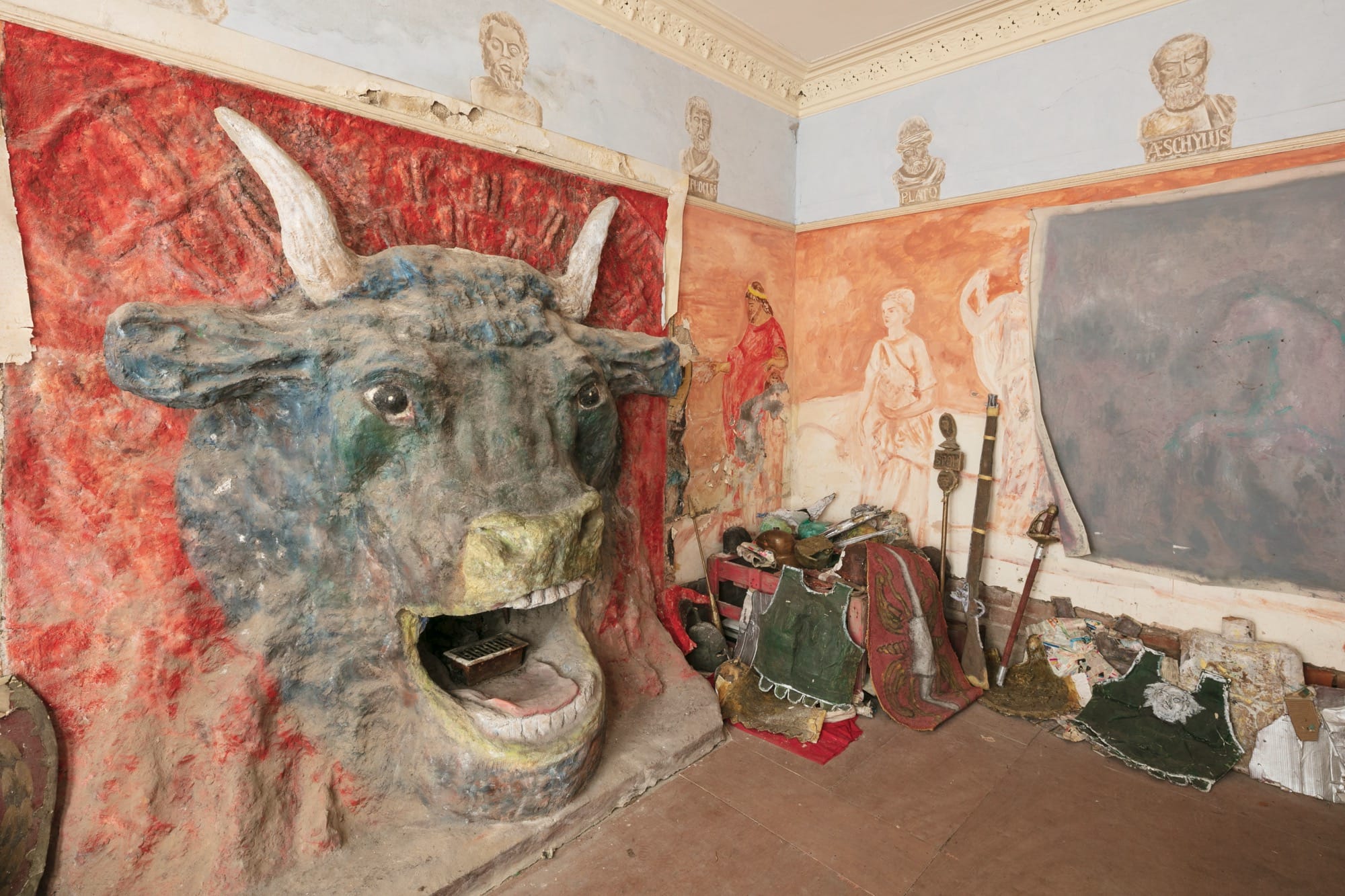This post was originally published on Colossal
Behind the unassuming red brick facade of a gable-roofed flat in Birkenhead, England, sits a home like no other. The only clue passersby would have had, until recently, was a pair of hand-sculpted figurative columns that flanked the wooden front door. But to step inside this corner flat near Liverpool is to be transported into the imaginative world of Ron Gittins.
A gifted artist who also dabbled in local acting groups and music, Gittins was a complex character. He took day jobs here and there, but he was much more inclined to work for himself, on his own terms. Anecdotally, he was known for his zest for life and determination to do great things; his sister recounts that he once exclaimed to their brother, “I will not be ignored!” His creativity shone through in every facet of his life, and his home is no exception.

In a ground floor rented flat, which he let in 1986, Gittins created monumental hearths in the shapes of a lion, minotaur, and relief-adorned Roman altar. He painted bright murals inspired by ancient Greece, Rome, and Egypt, including a central hallway adorned with hieroglyphs. The columns at the front door were reminiscent of palatial stone depictions of pharaohs and deities.
Gittins turned to the era of English romantic portraiture in one room’s Georgian era-inspired murals, which feature framed paintings in a row above an ornate hearth. And in the bathroom, the walls swim with aquatic-themed images.
“Although Ron was extremely proud of his artwork, he generally refused entry to landlords, maintenance staff, and any kind of officialdom in order to protect the fantasy world he had created for himself,” says a statement from Wirral Arts & Culture Community Land Trust, which now owns and manages the property. It adds, “After all, not every property owner would allow their tenant to build an epic concrete lion fireplace in their living room.”
Gittins’ tenancy agreement permitted him to “decorate the interior of the property to his own taste and the external porch in classical style without the prior written consent of the Landlord.” He also had access to the garden, which he was able to landscape at his own expense.

Few people were granted the privilege of seeing Gittins’ creations during his lifetime, as he was protective of his art and preferred to maintain his privacy. He continued to collect unique objects and transform his home into his ultimate fantasy, his self-described “villa.” Then, following his unexpected death in 2019, its fate was suddenly uncertain.
In December 2021, artist Jan Williams—who is also Gittins’ niece—along with Chris Teasdale of The Caravan Gallery, launched a campaign to save the flat. Along with a dedicated team of volunteers comprising family, friends, and experts in arts and heritage, a last-minute purchase at auction was successful in March 2023. Since then, the team has continued caring for the installations and sifting through the artist’s eclectic collection of books, magazines, videos, clothes, furniture, and trinkets.
The Wirral Arts & Culture Community Land Trust continues to catalogue Gittins’ belongings and work to preserve this unique environment for years to come. Learn more and take a virtual tour on the organization’s website.








Do stories and artists like this matter to you? Become a Colossal Member today and support independent arts publishing for as little as $7 per month. The article Near Liverpool, a One-of-a-Kind Art Environment by Ron Gittins Is Saved appeared first on Colossal.





0 Comments